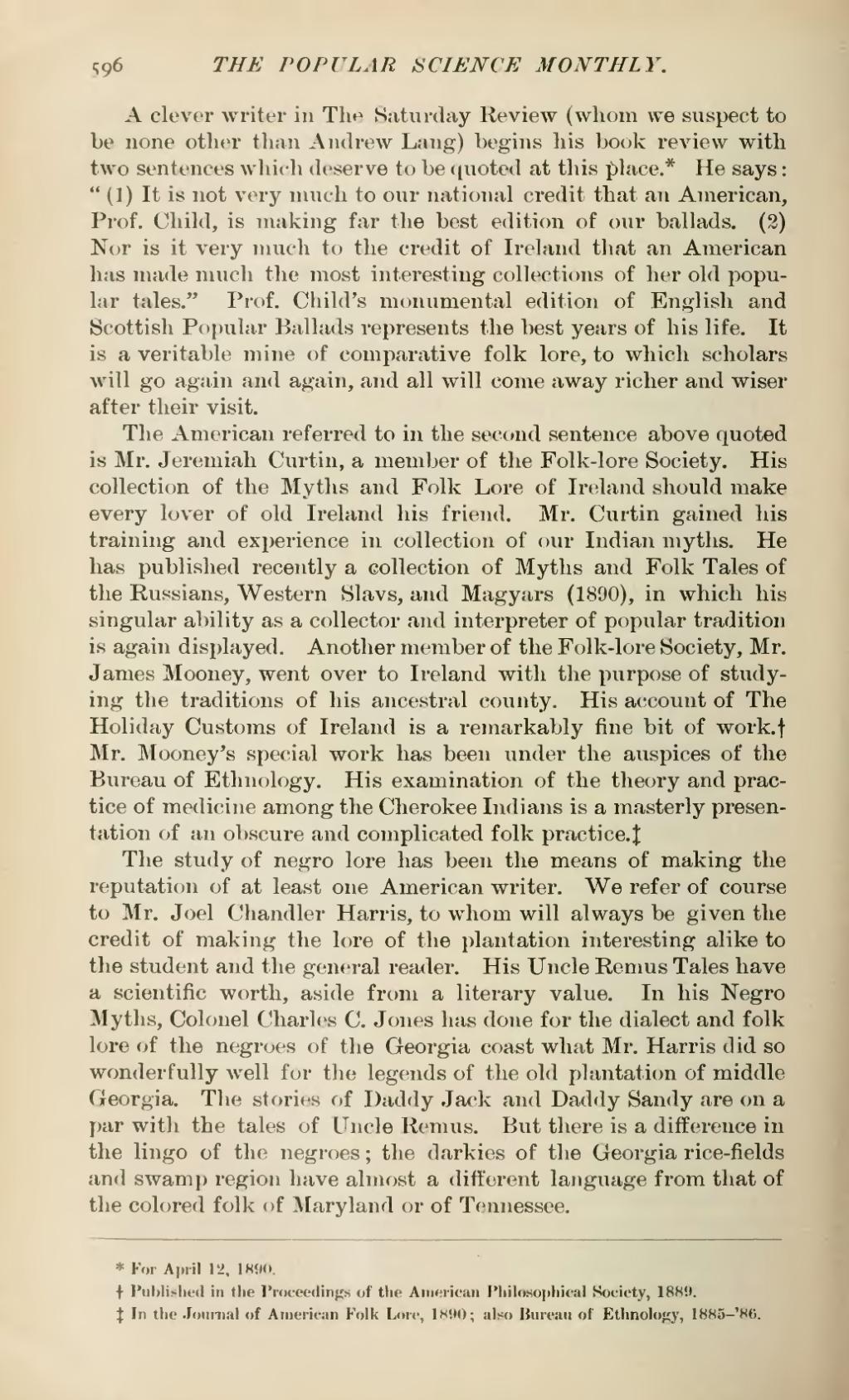A clever writer in The Saturday Review (whom we suspect to be none other than Andrew Lang) begins his book review with two sentences which deserve to be quoted at this place.[1] He says: "(1) It is not very much to our national credit that an American, Prof. Child, is making far the best edition of our ballads. (2) Nor is it very much to the credit of Ireland that an American has made much the most interesting collections of her old popular tales." Prof. Child's monumental edition of English and Scottish Popular Ballads represents the best years of his life. It is a veritable mine of comparative folk lore, to which scholars will go again and again, and all will come away richer and wiser after their visit.
The American referred to in the second sentence above quoted is Mr. Jeremiah Curtin, a member of the Folk-lore Society. His collection of the Myths and Folk Lore of Ireland should make every lover of old Ireland his friend. Mr. Curtin gained his training and experience in collection of our Indian myths. He has published recently a collection of Myths and Folk Tales of the Russians, Western Slavs, and Magyars (1890), in which his singular ability as a collector and interpreter of popular tradition is again displayed. Another member of the Folk-lore Society, Mr. James Mooney, went over to Ireland with the purpose of studying the traditions of his ancestral county. His account of The Holiday Customs of Ireland is a remarkably fine bit of work.[2] Mr. Mooney's special work has been under the auspices of the Bureau of Ethnology. His examination of the theory and practice of medicine among the Cherokee Indians is a masterly presentation of an obscure and complicated folk practice.[3]
The study of negro lore has been the means of making the reputation of at least one American writer. We refer of course to Mr. Joel Chandler Harris, to whom will always be given the credit of making the lore of the plantation interesting alike to the student and the general reader. His Uncle Remus Tales have a scientific worth, aside from a literary value. In his Negro Myths, Colonel Charles C. Jones has done for the dialect and folk lore of the negroes of the Georgia coast what Mr. Harris did so wonderfully well for the legends of the old plantation of middle Georgia. The stories of Daddy Jack and Daddy Sandy are on a par with the tales of Uncle Remus. But there is a difference in the lingo of the negroes; the darkies of the Georgia rice-fields and swamp region have almost a different language from that of the colored folk of Maryland or of Tennessee.
